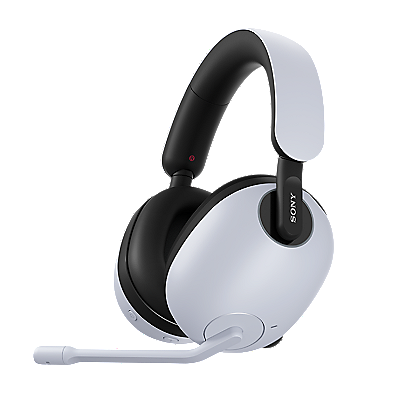Correcting clips
Correct clips in the editing area of the editing screen.
Select clips for correction, and then select a correction button at the top of the editing area.
To correct multiple clips at once, select [ Multiple select] at the top of the editing area and use the check boxes displayed.
There are four correction buttons, as follows.
- [
Image stabilization]: Image stabilization, using metadata from the time of recording by compatible cameras.
- For details on camera settings used with image stabilization, refer to the camera Help Guide and the following page.
Master Cut (Beta) feature compatibility - Image stabilization - Clips without Image stabilization information cannot be corrected.
- To enhance accuracy and reduce processing time, set the playback range (in/out points) of clips before applying correction.
- For details on camera settings used with image stabilization, refer to the camera Help Guide and the following page.
- [
Lens breathing compensation]: Compensates for changes of the angle of view or focal length (which may occur when the focus changes) by applying metadata to keep the angle of view or focal length constant. Manual adjustment is not available.
- For details on cameras and lenses that are compatible with lens breathing compensation and camera settings used with it, refer to the camera Help Guide and the following page.
Master Cut (Beta) feature compatibility - Lens breathing compensation - Clips without lens breathing compensation information cannot be corrected.
- To change the playback range (in/out points) of clips after lens breathing compensation, select [Change In/Out] in the preview.
This will cancel lens breathing compensation and restore the clip to the state before correction. Setting the clip playback range (in/out points)
- For details on cameras and lenses that are compatible with lens breathing compensation and camera settings used with it, refer to the camera Help Guide and the following page.
- [
Color correction]: After you specify a reference frame (a frame to serve as the basis, in the clip), the entire clip will be corrected to optimize the color of that frame.
- Color correction is not available unless the clip color space is Rec. 709.
- Color correction may result in colors that look different depending on details such as the monitor or operating system used.
- [
Audio correction]: People's voices are detected and the volume is optimized, with Music, Wind noise, and Other in the background automatically adjusted so that the speaker's voice is easier to hear.
- Sound not classified as Voice, Music, or Wind noise for separation is classified as Other.
- Sound source separation may be less accurate if the speaker's voice is the same volume as music or noise in the background. It is easier to isolate Voice if you record a movie with the speaker's voice louder than music or noise in the background.
- Items that are not selected when correction is applied will remain at the original volume.
After [ Reset correction] the image cropping ratio is automatically set to a recommended value, but this setting can be adjusted.
Set the reference frame for color correction
- Select [
Color correction] to display a dialog for setting the reference frame.
- If multiple clips are currently selected, select only one. Below the seek bar, drag
(Specify reference frame position) to position the reference frame while checking the preview.
- To align the reference frame with the playback position, select [Sets the current playback position as the reference frame] during preview playback.
- Previewing can also be controlled with keyboard shortcuts. List of keyboard shortcuts
Manually fine-tuning clip correction
You can manually fine-tune corrected clips individually in the clip editing area.
- This adjustment is not available when multiple clips are selected.
Manually adjusting Image stabilization
- After Image stabilization, the image cropping ratio is automatically set to a recommended value, but this setting can be adjusted.
Reducing the cropping ratio enhances Image stabilization but removes a larger area around the image. Image quality is reduced when the image is exported because the image is enlarged after cropping. - The cropping ratio slider is marked (
) to indicate recommended setting values.
To set the cropping ratio, refer to the recommended marks and select(Down) /
(Up) or drag
(setting value) on the slider.
Dragging the slider setting changes the frame shown in the preview, which indicates the area that will be cropped. The frame shown is only approximate and may not match the actual size exactly. Note that the preview shown while the frame is displayed is the clip without image stabilization applied. If you have applied lens breathing compensation, the size of the frame reflects the amount of cropping by lens breathing compensation. - To restore the modified cropping ratio to the recommended setting, select [Recommended].
- To review the most recent preview, select [Update preview].
- To restore the previous preview and cropping ratio, after any changes to the cropping ratio are shown in the preview, select [Restore preview].
- To change the playback range (in/out points) of clips after image stabilization, select [Change In/Out] in the preview.
In this case, image stabilization is canceled and the clip reverts to its pre-corrected state.
Setting the clip playback range (in/out points)
Manually adjusting Color correction
- Recommended Color correction settings are automatically set after Color correction processing, and you can fine-tune Lift, Gamma, and Gain settings separately.
To set RGB values, specify their coordinates by moving the circle in the center of each color wheel. For a greater amount of movement, hold down the Shift key as you move the circle in the center. Double-click to reset the setting.
To set Y values, drag the handle on the left of each color wheel up or down along the arc. For a greater amount of movement, hold down the Shift key as you drag the handle at left. Double-click to reset the setting.
Each value can also be set by entering a number. - To redo the Color correction settings using a different frame, select [Change reference frame].
- To restore modified settings to the recommended values, select [Recommended].
- To reset the color wheels, select [Reset] to return the circles to the center. The original color space of the corrected clip is restored.
Manually adjusting Audio
- The analysis performed after Audio correction is executed separates sound sources into Voice and Environmental noise (Music, Wind noise, and Other).
Recommended settings are automatically set after sound correction, but Voice and Environmental noise (Music, Wind noise, Other) settings can be adjusted. - The Voice and Environmental noise (Music, Wind noise, Other) sliders are marked (
) to indicate recommended setting values.
To set the cropping ratio, refer to the recommended marks and select(Down) /
(Up) or drag
(setting value) on the slider.
- To restore modified volumes to recommended levels, select [Recommended].
- To restore selected or set audio to the original level, select [Original] or set the value to 0.0 dB.
- Note that [Music] is not displayed if you select a clip for which Audio correction was performed before the Master Cut update on October 24, 2023. [Music] is displayed when audio correction is executed using a version of Master Cut (Beta) released on or after October 24, 2023.
- You can check the results of clip adjustment in the preview.





















